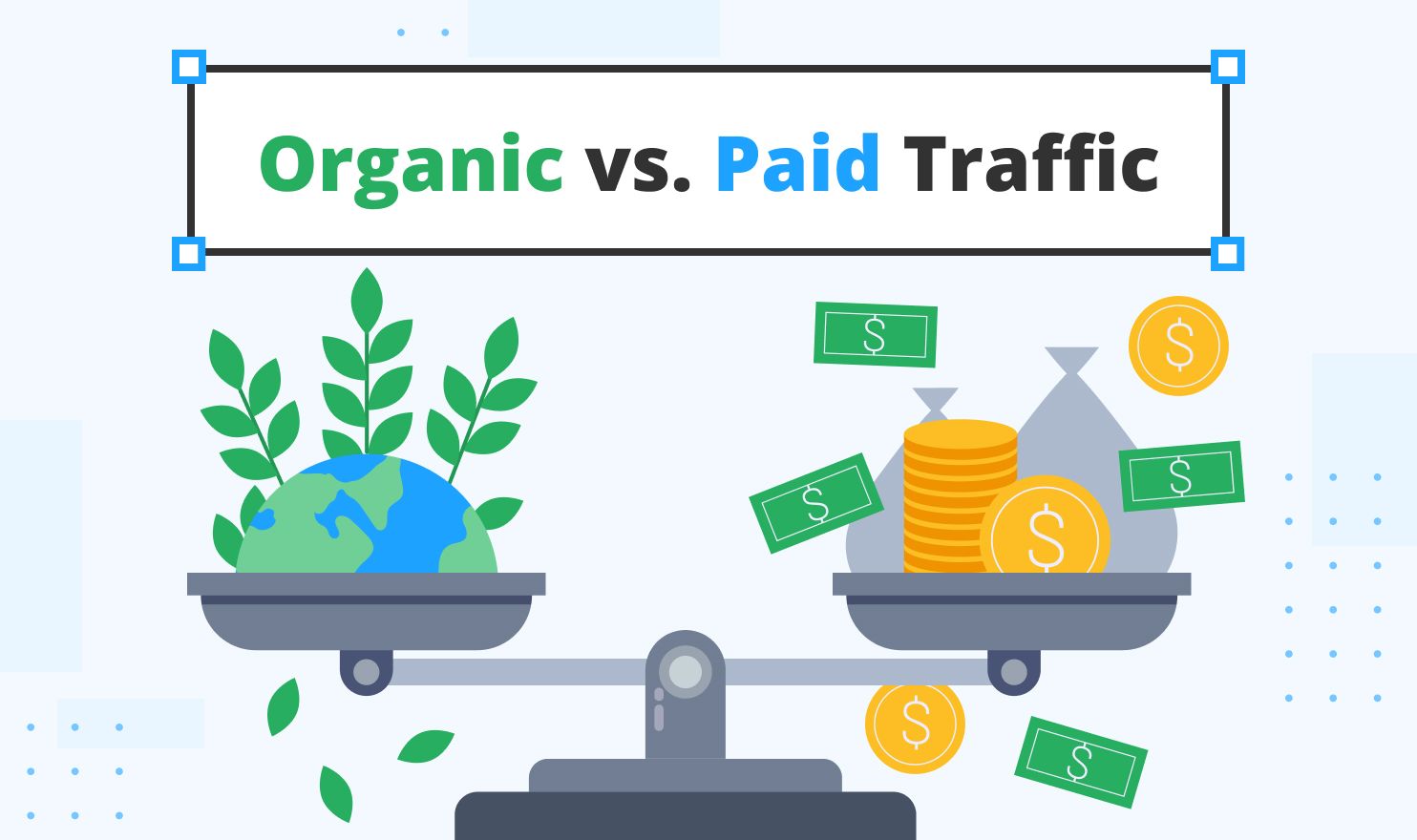One of the most important concepts for anyone working with digital marketing — and especially for aspiring traffic managers — is understanding the difference between paid and organic traffic. Both types are essential to an online strategy, but they work in very different ways and serve different purposes.
In this article, we’ll break down the key differences, benefits, drawbacks, and when to use each type of traffic to maximize your results.
What Is Organic Traffic?
Organic traffic refers to visitors who land on your website or platform without clicking on a paid advertisement. They usually come from:
- Search engines like Google or Bing
- Social media posts without ads
- Backlinks from other websites
- Email marketing (in some cases)
This type of traffic is “free” in the sense that you don’t pay per click, but it requires time, consistency, and content quality.
Pros of Organic Traffic
- No cost per click: Once you’re ranking or gaining attention organically, the traffic is free.
- Long-term results: A well-ranked article or post can keep generating visitors for months or even years.
- Trust and credibility: Users often trust organic content more than ads.
Cons of Organic Traffic
- Takes time: SEO (search engine optimization) and social media growth can take months.
- Requires content strategy: You need to produce valuable, well-optimized content consistently.
- Less control: You can’t always guarantee how many people will see your content.
What Is Paid Traffic?
Paid traffic is when you pay to send people to your website using platforms like:
- Facebook Ads / Meta Ads
- Google Ads
- YouTube Ads
- Instagram and TikTok Ads
You define a budget, choose an audience, and run campaigns to generate clicks and conversions.
Pros of Paid Traffic
- Fast results: You can start getting visitors within minutes after launching a campaign.
- Highly targeted: You control who sees your ads based on interests, location, behavior, etc.
- Scalable: If a campaign is working, you can increase the budget and reach more people.
Cons of Paid Traffic
- Requires investment: You need money to test and optimize campaigns.
- Temporary: Once the budget ends, the traffic stops.
- Steep learning curve: Poorly managed campaigns can burn your budget without results.
Key Differences Between Paid and Organic Traffic
| Feature | Organic Traffic | Paid Traffic |
|---|---|---|
| Cost | Free per visitor | Cost per click or impression |
| Speed | Slow growth | Immediate results |
| Targeting | Indirect (via content/SEO) | Direct (based on audience filters) |
| Longevity | Long-term, evergreen | Short-term, as long as you pay |
| Control | Low control over reach | Full control over audience |
| Trust factor | High (content-driven) | Lower (seen as ads) |
When Should You Use Organic Traffic?
Organic traffic is best when:
- You’re building long-term authority (blog, YouTube, podcast)
- You don’t have much ad budget
- You want to educate or nurture an audience over time
- You aim for SEO visibility on Google
Organic should be part of every brand’s foundation. It’s sustainable and helps build audience loyalty.
When Should You Use Paid Traffic?
Paid traffic is ideal when:
- You want fast traffic to test an idea, product, or offer
- You’re running a limited-time promotion
- You have a specific conversion goal (e.g., signups, sales)
- You’re scaling an already validated business
It’s especially powerful for launching new products, growing email lists, and retargeting visitors who didn’t buy the first time.
The Ideal Strategy: Combine Both
The most effective marketing strategies use both paid and organic traffic.
For example:
- You publish SEO-optimized blog posts for long-term visibility
- Then, you boost those posts with ads to speed up visibility
- You use organic content to build trust — and paid ads to convert
Paid traffic helps you accelerate results, while organic traffic helps you sustain them over time.
Tips for Beginners
If you’re just starting:
- Focus on organic content to build authority (and learn your audience)
- Run small paid traffic campaigns ($5/day) to experiment
- Learn to use Google Analytics to track both sources of traffic
- Avoid relying 100% on either method — balance is key
Final Thought: It’s Not Either-Or — It’s Both
The debate of “paid vs. organic traffic” misses the point. Both are tools — and a skilled traffic manager knows when and how to use each. Mastering this balance is what sets great digital professionals apart.

